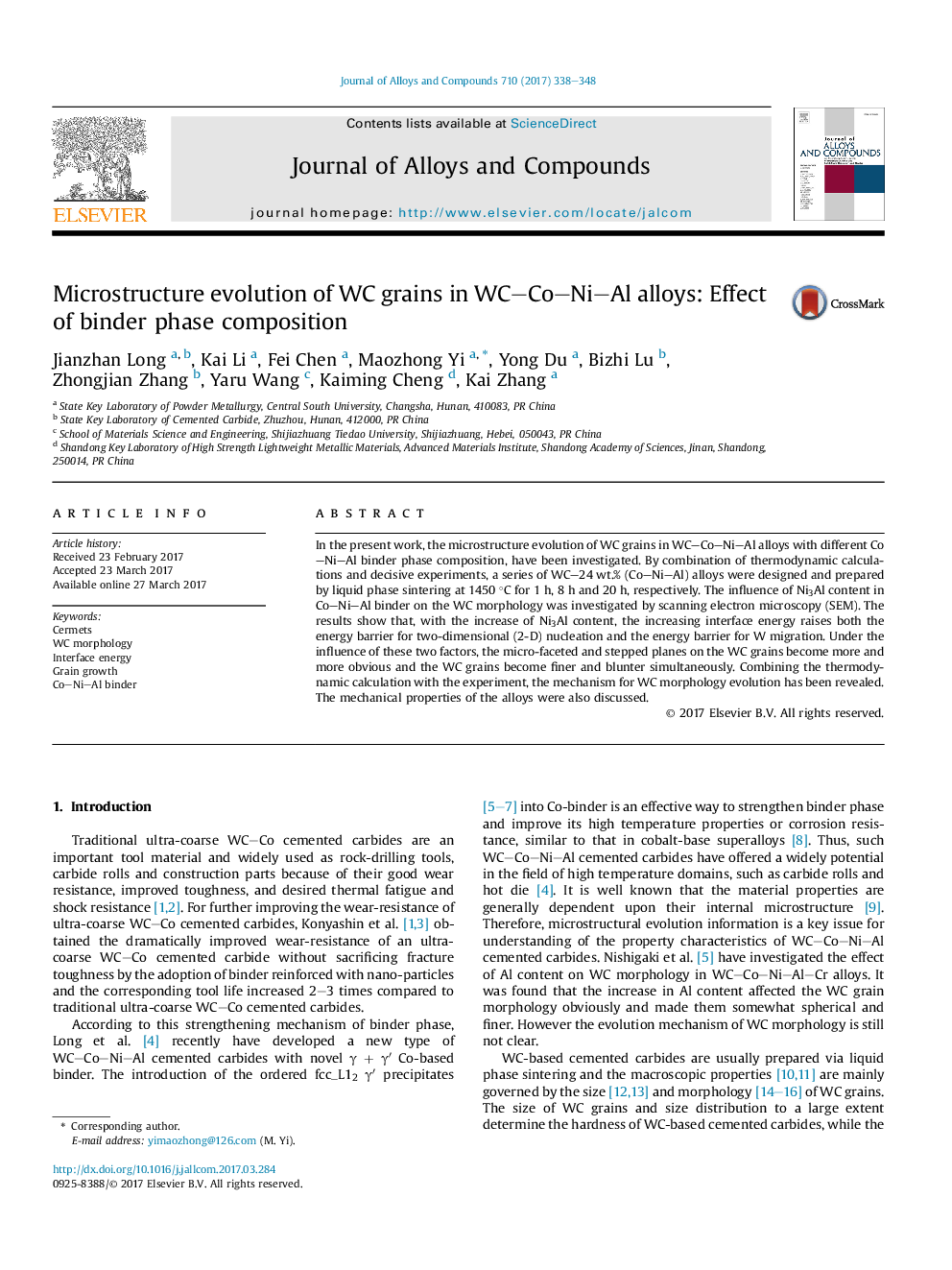| کد مقاله | کد نشریه | سال انتشار | مقاله انگلیسی | نسخه تمام متن |
|---|---|---|---|---|
| 5461117 | 1516184 | 2017 | 11 صفحه PDF | دانلود رایگان |

- The solid-liquid interfacial energy of WC-24 (Co-Ni-Al) with different Ni3Al contents is calculated.
- The W compositional gradient and the W solubility are examined systematically at room temperature.
- The layer-by-layer structures on WC grains have been extrapolated.
- The transverse rupture strength and Rockwell hardness are discussed according to corresponding microstructure.
In the present work, the microstructure evolution of WC grains in WC-Co-Ni-Al alloys with different Co-Ni-Al binder phase composition, have been investigated. By combination of thermodynamic calculations and decisive experiments, a series of WC-24 wt.% (Co-Ni-Al) alloys were designed and prepared by liquid phase sintering at 1450 °C for 1 h, 8 h and 20 h, respectively. The influence of Ni3Al content in Co-Ni-Al binder on the WC morphology was investigated by scanning electron microscopy (SEM). The results show that, with the increase of Ni3Al content, the increasing interface energy raises both the energy barrier for two-dimensional (2-D) nucleation and the energy barrier for W migration. Under the influence of these two factors, the micro-faceted and stepped planes on the WC grains become more and more obvious and the WC grains become finer and blunter simultaneously. Combining the thermodynamic calculation with the experiment, the mechanism for WC morphology evolution has been revealed. The mechanical properties of the alloys were also discussed.
414
Journal: Journal of Alloys and Compounds - Volume 710, 5 July 2017, Pages 338-348